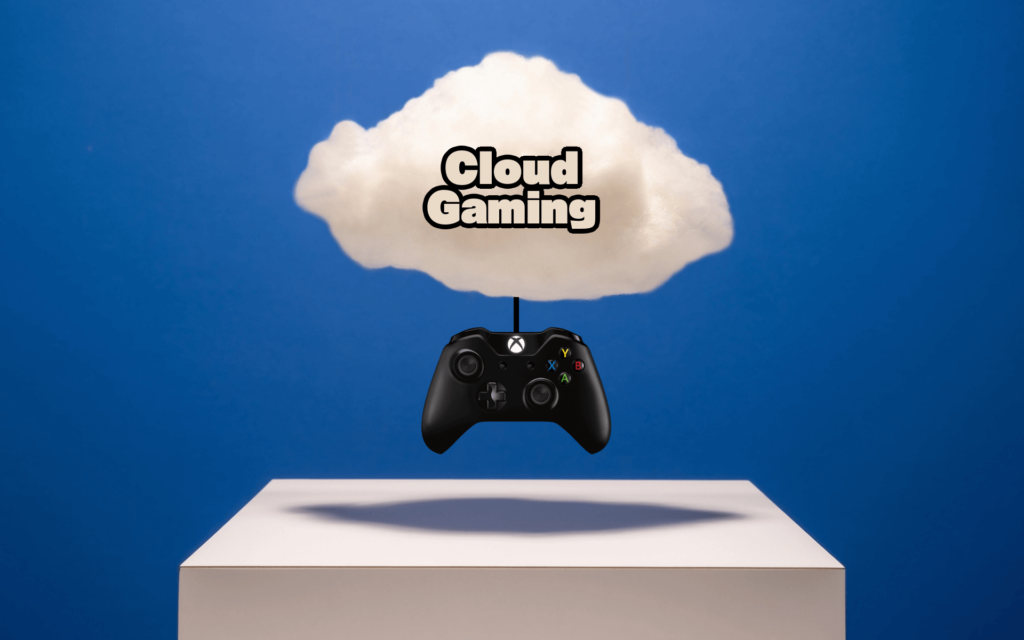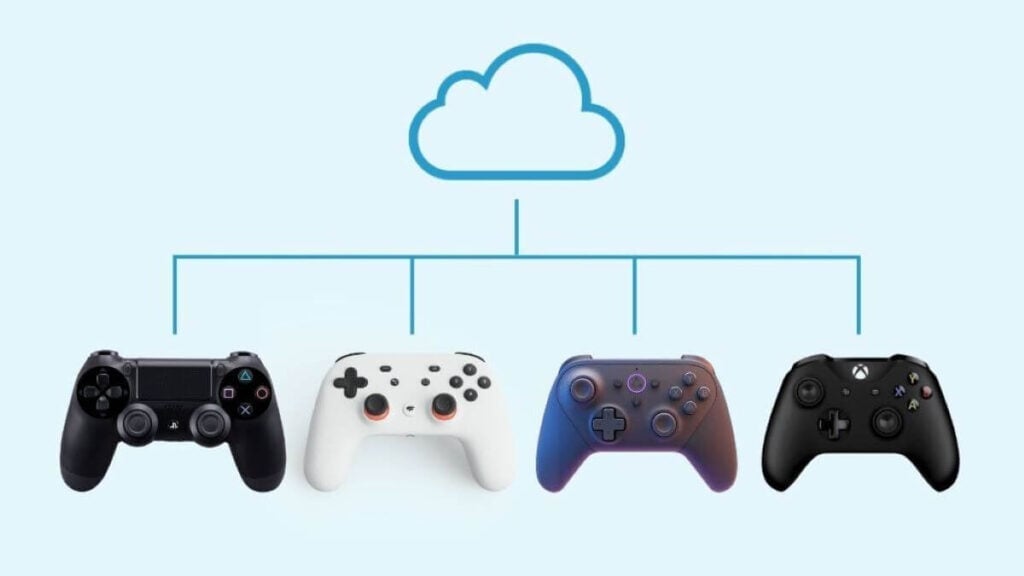The Impact of Cloud Gaming on the Gaming Industry (2025 Analysis)
The gaming industry has experienced significant advancements and transformations over the years, and one of the most groundbreaking innovations in recent times is the impact of cloud gaming. Cloud gaming, also known as gaming on-demand or gaming-as-a-service (GaaS), has revolutionized how people play and access video games.
This technology allows gamers to stream games directly to their devices without the need for expensive gaming hardware. It’s had its ups and downs, and while many would argue it hasn’t necessarily had the best implementation, it’s certainly impacted the gaming industry. The question is, what exactly is the impact of cloud gaming on the gaming industry?
What Exactly Is Cloud Gaming?

Cloud gaming isn’t difficult to wrap one’s head around once you’ve experienced it. However, it can seem somewhat confusing without using it, which is why we’re here to explain. As we said earlier, cloud gaming is a technology that allows users to play video games on various devices by streaming them directly from remote servers rather than running them on local hardware.
In cloud gaming, the game is processed, rendered, and executed on powerful servers located in data centers. The video and audio output are streamed to the player’s device in real-time. The player’s inputs are sent back to the server, creating an interactive gaming experience without high-end hardware.
The History of Cloud Gaming

The concept of cloud gaming has been around for several decades. Still, it gained significant attention and development in the late 2000s. OnLive, a pioneer in cloud gaming, launched its service in 2010, marking a milestone in the history of cloud gaming. OnLive allowed users to stream games to their devices using a small set-top box, including PCs, Macs, and even televisions. The games were stored and processed on remote servers and then outputted to players online.
While OnLive was one of the first cloud gaming platforms to gain widespread recognition, the technology faced some big challenges. Internet speeds and infrastructure were not as advanced as today, resulting in latency issues and lower video quality. Despite these initial hurdles, OnLive paved the way for future developments in cloud gaming.
Over the years, cloud gaming has evolved and expanded with the advancements in internet connectivity, server infrastructure, and technology. Major players like Sony (PlayStation Now), NVIDIA (GeForce NOW), and Google (Google Stadia) have entered the cloud gaming market, introducing their platforms and services.
These platforms offer extensive libraries of games that can be streamed to various devices, including smartphones, tablets, PCs, and dedicated streaming devices. While some have excelled more than others, the market has seen some degree of demand. Even Nintendo have adopted the model for their console, the Nintendo Switch, allowing the weaker console to play high-end games.
The Positive Benefits of Cloud Gaming on the Gaming Industry

With the increasing availability of high-speed internet and the continuous development of cloud infrastructure, cloud gaming has become more accessible and reliable. The technology has gained significant traction, and its impact on the gaming industry is continuously growing. Thus, this brings us to the topic of the article as we round up some of the biggest positive impacts cloud gaming has had.
1. Accessibility and Demographic Expansion

Perhaps the best aspect of cloud gaming is its ability to enhance accessibility. Traditionally, gaming required a dedicated gaming console or a powerful gaming PC. These can get quite costly, especially with how PC parts can fluctuate wildly in pricing. It creates a situation where some gamers are unable to play certain games, with their device gating them from it.
Cloud gaming eliminates the need for high-end hardware as games are streamed over the internet. This accessibility has opened up gaming to a broader audience, including those who may not have previously been able to afford gaming equipment. This doubles up, as cloud gaming isn’t platform-specific either, meaning gamers can use anything from cheap PCs to smartphones for cloud gaming.
This democratization of gaming has attracted a more diverse demographic, including casual gamers, older adults, and individuals in regions with limited gaming infrastructure. As a result, the gaming industry has experienced a significant boost in user numbers and engagement.
2. Reduced Cost of Entry
Cloud gaming platforms often operate on a subscription model, where players pay a monthly fee for access to a library of games. This subscription-based approach allows gamers to explore a wide variety of titles without needing to purchase each game individually. It reduces the cost barrier associated with gaming, making it more affordable and accessible to a larger audience.
This also adds to the previous point, as being able to stream games simply means you do not need to purchase expensive PC components just to game. Overall, it’s simply a much more economical way to enjoy the games you love without the need to break the bank over it.
3. Piracy Prevention
Cloud gaming services implement robust security measures to prevent piracy. Since games are streamed rather than downloaded, it becomes much more challenging for unauthorized individuals to copy or distribute game files. This has a positive impact on game developers and publishers, ensuring that their intellectual property is protected and their revenue streams are more secure.
This also works towards the benefit of gamers. Instead of needing to finagle with settings and controls on pirated games that may not even work, you can simply pick and play a game without any difficulty. Even multiplayer will work flawlessly, which is always a plus. Overall, it encourages the creation of innovative and high-quality games by providing a sustainable business model for developers.
4. Greater Outreach for Indie Developers

Cloud gaming has encouraged the growth of independent game development. Generally speaking, indie studios are made up of talented people but don’t have the financial capabilities or manpower to push huge marketing campaigns for their games. As a result, many quality indie games made with love and care tend to go under the radar for gamers. This changes when cloud gaming is brought into the equation.
Thanks to how cloud gaming pushes a great variety of games, even indie games get a heavy push very often. Because of this, smaller studios and indie developers can now access a larger market without the need for significant financial investments in distribution and marketing. This has led to a more diverse and vibrant gaming landscape, with a broader range of games catering to more people.
5. A Stronger Push for Technological Advancement
Cloud gaming heavily relies on robust and scalable infrastructure to deliver a seamless gaming experience. The technology necessitates low-latency, high-bandwidth internet connections to minimize lag and ensure responsive gameplay. As a result, the expansion of cloud gaming has driven advancements in networking technology and the development of improved internet infrastructure.
Moreover, the success of cloud gaming has accelerated the adoption of emerging technologies such as 5G networks and edge computing. These technologies offer faster speeds and lower latency, further enhancing the gaming experience. As cloud gaming continues to evolve, it will continue to drive innovation in networking and infrastructure, benefiting many different industries all at once!
The Challenges and Limitations of Cloud Gaming

While cloud gaming brings numerous advantages, it also faces several challenges and limitations. It’s important to address these potential issues now so that companies and developers can begin working on countermeasures for them early on. These can be potential deal breakers for people who want to try cloud gaming, so make sure to look these over closely before getting a subscription.
1. Requires Fast and Stable Internet Connectivity
One of the primary concerns is internet connectivity. Cloud gaming requires a stable and fast internet connection, which may be unavailable or unreliable in certain regions or for individuals with limited access to broadband services.
This reliance on internet infrastructure poses a significant barrier to the widespread adoption of cloud gaming. After all, not everyone can afford high-speed, high-bandwidth internet. On top of this, as said earlier, certain regions simply do not have access to high-speed internet, or any form of internet for that matter. In cases like these, cloud gaming’s weaknesses become more apparent.
2. Input Latency in Games
Perhaps even worse than needing fast internet is the issue of latency, or the delay between a player’s input and the corresponding action on the screen. Despite advancements in networking technology, latency can still affect the gaming experience, particularly in fast-paced and competitive games where split-second reactions are crucial.
Latency issues gate genres like fighting and rhythm games from being fit to play on cloud gaming. These types of games are intense, requiring gamers to react instantly to split-second movements. With latency, this is simply not feasible, resulting in a disappointingly bad experience for everyone involved. If cloud gaming is to pick up speed, it needs to find a way to work out latency issues.
3. Questionable Media Ownership
Finally, one of the less obvious challenges is the question of media ownership. Cloud gaming’s shift towards digital distribution and subscription-based services could diminish the market for physical game copies and limit players’ ownership rights. This has sparked debates about preserving gaming history and the long-term availability of games in a cloud-based ecosystem.
The big question that comes to mind is how, at any point, all these games could be taken away from you. Your ability to play any game is constantly at risk of being removed from a cloud gaming platform. Once it’s removed, it’s possibly gone forever. Thus, many argue that cloud gaming isn’t great for game preservation, especially If it becomes the standard.
The Future of Cloud Gaming

Cloud gaming has transformed the gaming industry, revolutionizing accessibility, business models, and market dynamics. It has attracted a more diverse audience, reduced barriers to entry, and provided cost-effective alternatives for gamers. Cloud gaming has also driven technological advancements and infrastructure developments, benefiting many industries.
However, with many challenges in the way of cloud gaming’s growth, the technology’s future is tenuous. Despite all this time, the internet connectivity and latency persist, though things are improving quickly. The potential of cloud gaming remains promising, and as the technology continues to evolve, we can expect further improvements.
The impact of cloud gaming on the gaming industry is far-reaching, and it will continue to shape the future of interactive entertainment. We’re eager to see how it grows from here and how cloud gaming providers will overcome the challenges and limitations of the service outlined above.
Please follow my WhatsApp Channel for the latest updates. You can also Contact Me if you need any further assistance.






